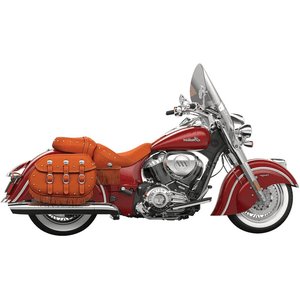Indian Chief Vintage 1800 [2014 - 2020]: A Timeless American Icon Reimagined
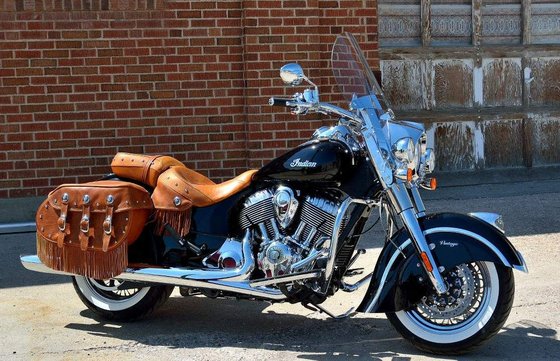
Introduction
The Indian Chief Vintage 1800 isn’t just a motorcycle—it’s a rolling tribute to America’s motorcycle heritage, infused with modern engineering and an unapologetic flair for nostalgia. Produced from 2014 to 2020, this model generation stands as a bridge between classic design and contemporary performance. With its valanced fenders, thunderous V-twin engine, and leather-clad details, the Chief Vintage isn’t trying to blend in. It’s here to remind riders of a bygone era while delivering a ride that’s as refined as it is raw.
Having spent a day aboard a 2019 Chief Vintage, I can confirm this machine isn’t just about looks. It’s a carefully crafted experience, blending old-school charm with tech-savvy features. Let’s dive into what makes this motorcycle a standout in the crowded cruiser segment.
Design & Aesthetics: Where Heritage Meets Craftsmanship
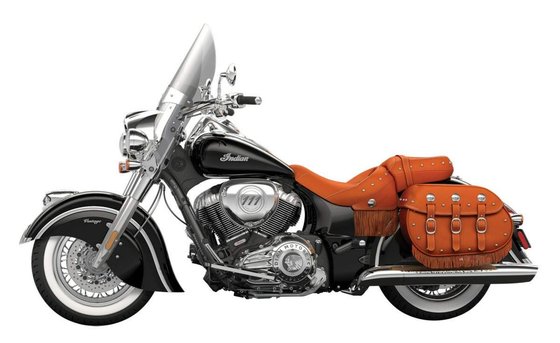
The Chief Vintage’s design is a masterclass in balancing tradition and modernity. Every inch of this bike feels intentional:
- Iconic Silhouette: Valanced fenders (a staple since 1940), a teardrop fuel tank, and chrome accents dominate the profile. The 16-inch laced wheels wrapped in whitewall tires scream retro authenticity.
- Leather & Chrome: Distressed tan leather saddlebags, a fringe-adorned seat, and chrome finishes on the exhaust, engine covers, and lighting elements create a tactile richness. The quick-release windshield adds practicality without disrupting the vintage vibe.
- Attention to Detail: The illuminated War Bonnet emblem on the front fender and tank-mounted analog-digital gauge cluster are subtle nods to Indian’s legacy.
The 2019-2020 models introduced deeper color palettes like Willow Green/Ivory Cream, which age gracefully under sunlight, while earlier years favored bold options like Springfield Blue. This isn’t a bike for wallflowers—it demands attention at every stoplight.
Engine & Performance: Thunder Stroke 111’s Roaring Soul
At the heart of the Chief Vintage lies the Thunder Stroke 111, a 1,811cc (110.5 cubic inches) air-cooled V-twin. Let’s break down its character:
- Torque Monster: With 161.4 Nm (119 lb-ft) peaking at just 3,000 RPM, this engine pulls like a freight train from idle. You’ll feel the surge in your spine when rolling on the throttle, whether cruising at 80 km/h (50 mph) or launching from a standstill.
- Smooth Operator: The 6-speed gearbox and belt final drive minimize vibrations, even at highway speeds. Later models (2019+) added Rear Cylinder Deactivation, reducing heat during traffic stops—a godsend in summer.
- Signature Sound: The split dual exhaust delivers a deep, throaty rumble that’s muscular without being obnoxious. It’s the kind of note that turns heads without violating noise ordinances.
Despite its 379 kg (835 lbs) wet weight, the Chief Vintage feels surprisingly nimble once moving. The low seat height of 660–692 mm (26–27.2 inches) instills confidence, though the bike’s bulk is noticeable during slow-speed maneuvers.
Riding Experience: Comfort Meets Contradiction
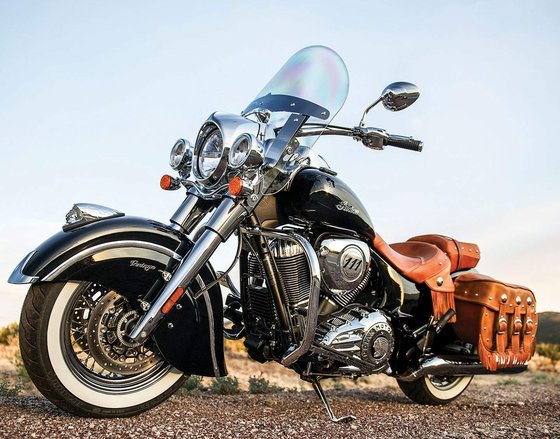
The Good:
- Highway Dominance: The 1,730 mm (68.1-inch) wheelbase and relaxed 29° rake angle make it a straight-line champ. Cruise control (standard post-2016) lets you eat miles effortlessly.
- Ergonomics: The beach-style handlebars and floorboards position your body in a natural, upright stance. The seat, while firm at first, softens over long rides.
- Tech Surprises: Keyless ignition and selectable ride modes (Tour, Standard, Sport on 2019+ models) add modern convenience. Sport mode sharpens throttle response for spirited riding.
The Quirks:
- Weight Penalty: Parking lot maneuvers require patience. The center of gravity feels high until you’re rolling.
- Suspension Limits: The 119 mm (4.7-inch) front and 94 mm (3.7-inch) rear travel handle bumps adequately but struggle with sharp potholes.
This isn’t a canyon carver, but it excels as a boulevard cruiser and weekend tourer.
Competition: How the Chief Vintage Stacks Up
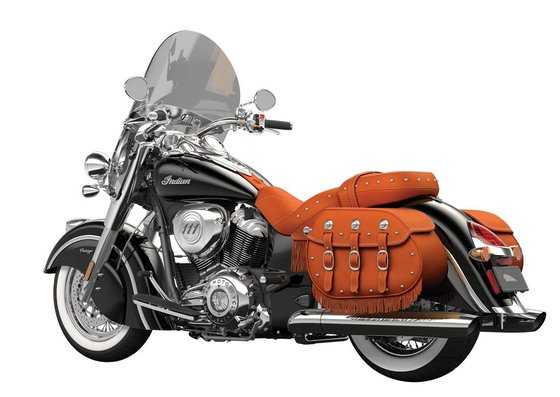
1. Harley-Davidson Heritage Classic
- Pros: Lighter (330 kg/727 lbs), iconic Milwaukee-Eight engine, customizable.
- Cons: Less torque (150 Nm/110 lb-ft), higher price for comparable trim.
- Verdict: The Heritage appeals to purists, but the Chief Vintage offers more standard tech and a brawnier engine.
2. Honda Fury
- Pros: Radical chopper styling, agile handling, lower maintenance.
- Cons: Smaller 1,312cc engine, minimal storage, lacks cruise control.
- Verdict: The Fury is for style-first riders; the Chief Vintage prioritizes comfort and tradition.
3. Victory Cross Country (Discontinued)
- Pros: Touring-focused, spacious storage, smooth powertrain.
- Cons: Dated tech, heavier (408 kg/900 lbs), no longer in production.
- Verdict: The Chief Vintage fills the void Victory left, offering similar touring chops with better aesthetics.
The Chief Vintage’s blend of heritage design and modern features makes it a unique contender—especially for riders who value nostalgia without sacrificing performance.
Maintenance: Keeping the Thunder Alive
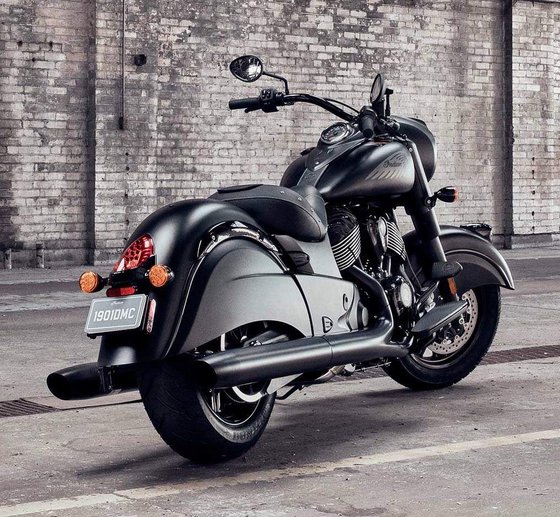
Ownership costs are reasonable for a heavyweight cruiser, but attention to detail is key:
Key Service Points:
- Engine Oil: SAE 20W-40 (5.2L/5.5 qt with filter). Change every 5,000 km (3,100 mi).
- Belt Drive: Inspect every 10,000 km (6,200 mi) for tension (152 teeth). No lubrication needed—a win over chain drives.
- Tire Pressure: 36 PSI front (2.5 Bar), 41 PSI rear (2.8 Bar). Crucial given the bike’s weight.
- Brake Fluid: DOT 4. Flush every two years to maintain ABS performance.
Upgrades & Recommendations:
- Exhaust: Swap stock pipes for slip-ons (e.g., Stage 1) to enhance the V-twin growl.
- Seat Comfort: Aftermarket gel seats reduce fatigue on multi-hour rides.
- Performance: Air intake upgrades (“Big Sucker”) improve throttle response.
At MOTOPARTS.store, we stock everything from NGK DCPR8E spark plugs to premium leather care kits to keep your Chief Vintage looking and running like new.
Final Thoughts: More Than a Machine
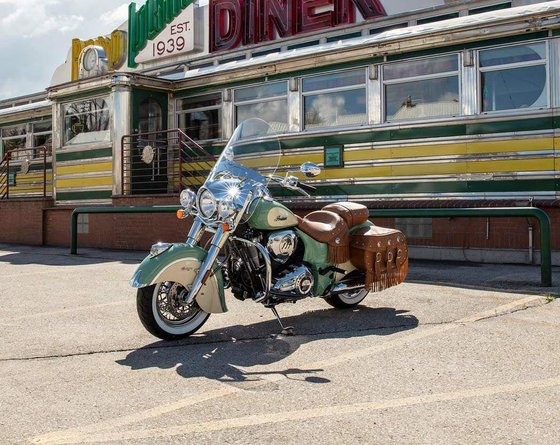
The Indian Chief Vintage 1800 isn’t just transportation—it’s a statement. From the moment you thumb the keyless ignition to the second you kick down the jiffy stand, every ride feels like an event. It’s a motorcycle that respects its roots while embracing the 21st century, offering enough torque to thrill and enough tech to reassure.
Yes, it’s heavy. Yes, the suspension could be plusher. But these quibbles fade when you’re carving a sunset-lit highway, the Thunder Stroke 111 bellowing beneath you, and those leather saddlebags carrying stories yet to be written. For riders who crave authenticity without compromise, the Chief Vintage remains a compelling choice—a machine that’s as much about the journey as the destination.
Ready to personalize your Chief Vintage? Explore MOTOPARTS.store’s curated selection of upgrades, from performance mods to vintage-inspired accessories. Your next adventure deserves nothing less.











Specifications sheet
| Engine | |
|---|---|
| Stroke: | Four-stroke |
| Max power: | 75 kW | 101.0 hp |
| Max torque: | 162 Nm |
| Fuel system: | Closed Loop Sequential Port Fuel Injection |
| Max power @: | 5200 rpm |
| Displacement: | 1811 ccm |
| Max torque @: | 3000 rpm |
| Bore x stroke: | 101.0 x 113.0 mm (4.0 x 4.4 in) |
| Configuration: | V |
| Cooling system: | Air |
| Compression ratio: | 9.5:1 |
| Number of cylinders: | 2 |
| Features | |
|---|---|
| Warranty: | 2-year factory warranty + 5-year extended service contract (region dependent) |
| Standard equipment: | ['Keyless ignition', 'Cruise control', 'ABS', 'Quick-release windshield', 'Leather saddlebags', 'Whitewall tires', 'Wire-spoked wheels', 'Tank-mounted analog/digital instrument cluster', 'LED lighting'] |
| Dimensions | |
|---|---|
| Wheelbase: | 1730 mm (68.1 in) |
| Dry weight: | 365 |
| Wet weight: | 379 |
| Seat height: | 660 mm (26.0 in) |
| Overall width: | 1001 mm (39.4 in) |
| Overall height: | 1490 mm (58.7 in) |
| Overall length: | 2634 mm (103.7 in) |
| Ground clearance: | 140 mm (5.5 in) |
| Fuel tank capacity: | 20.8 L (5.5 US gal) |
| Drivetrain | |
|---|---|
| Clutch: | Wet, multi-plate |
| Belt teeth: | 152 |
| Final drive: | belt |
| Gear ratios: | 1st 9.403:1, 2nd 6.411:1, 3rd 4.763:1, 4th 3.796:1, 5th 3.243:1, 6th 2.789:1 |
| Transmission: | 6-speed |
| Final drive ratio: | 2.2:1 |
| Maintenance | |
|---|---|
| Engine oil: | 20W40 |
| Idle speed: | 800 ± 50 RPM |
| Brake fluid: | DOT 4 |
| Spark plugs: | NGK DCPR8E, NGK DCPR8EIX |
| Spark plug gap: | 0.9 |
| Valve clearance: | Hydraulic (no adjustment required) |
| Forks oil capacity: | 0.6 |
| Engine oil capacity: | 5.2 |
| Tire pressure (rear): | 2.8 bar (41 psi) |
| Tire pressure (front): | 2.5 bar (36 psi) |
| Engine oil change interval: | Every 5000km or 2 years |
| Chassis and Suspension | |
|---|---|
| Rake: | 29° |
| Frame: | Cast aluminum frame with integrated air-box |
| Trail: | 155 mm (6.1 in) |
| Rear tire: | 180/65b16 81h |
| Front tire: | 130/90b16 67h |
| Rear brakes: | 1 x 300 mm floating disc, 2-piston caliper (ABS) |
| Front brakes: | 2 x 300 mm floating discs, 4-piston calipers (ABS) |
| Rear suspension: | Single shock (air-adjustable on 2020 models), 94 mm (3.7 in) travel |
| Front suspension: | 46mm telescopic fork, 119 mm (4.7 in) travel |



